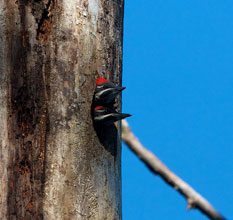 It was time for a final clean up in the garden. For the past two months I have been doing snippets here and there like trimming a stray branch or perennials I was pretty sure would return after our endless winter of 2018.
It was time for a final clean up in the garden. For the past two months I have been doing snippets here and there like trimming a stray branch or perennials I was pretty sure would return after our endless winter of 2018.
It seemed like almost all shrubs needed some maintenance work; there were dead twigs everywhere. It was a slow process this year, one that could not be rushed. Our plants needed to revive on their own schedule.
There were few expectations for the plants I had in flower pots. I was pretty sure most of them were history. We moved all the pots (many, many) that had been spread around the garden to an area my husband called the pot cemetery. They were just put on the back burner while we dealt with the primary landscaping.
Finally, this past week, I addressed the pots. Armed with a large container to empty the soil into, I started dumping the containers, large and small. Most plants were indeed demised, especially the big pots of annuals I had used to fill in empty garden spaces last summer and some bulbs that were nothing but mush. Then, all of a sudden I saw some new roots in some; turns out some plants were trying to make a comeback. This was a happy surprise initially, but the euphoria was short lived when I realized a sprout here or there would not be enough. Yes, there were some roots, but in most cases there were not enough to sustain growth for long.
There were even a few tiny green shoots on branches that looked dead, but it is unlikely that many will truly mature. While there was enough live tissue to stimulate growth there was just too much damage to the roots. A plant with too few roots to support the top growth can be stressed, leaving it predisposed to insects, disease and, by midsummer in the Lowcountry, heat stress. A few plants were re-potted in hopes that with proper TLC they will make it; others went straight to the compost pile.
On a higher note the ornamental pomegranate, Punica granatum ‘Nochi Shibari’, has been blooming with soft orange flowers, the petals edged in white, their texture like tissue paper. This is an ornamental pomegranate and no fruit will develop, but it sure is pretty. Roses, especially my ‘Peggy Martin,’ have been outstanding this spring. Peggy, a climber, has been dripping with pink flowers for many weeks now. This one is not susceptible to diseases and insects seem to leave it alone. Other than a bit of compost each year I don’t do anything to it. It does get tall and needs something to climb on; I have mine growing on an old Crape Myrtle. Heaviest flowering is in the spring, and if the weather conditions are right it will give you a light bloom in the fall. This is an heirloom rose and one worth looking for.
What would spring in the Lowcountry be without a herd of marauding deer? We have a group of six terrorizing our neighborhood right now. I forgot to spray deer repellent and the hardy hibiscus must have been particularly tasty because, this morning, the shrubs were a good foot shorter than they were yesterday. It appeared they tried a gardenia flower and found it unappetizing as it was bitten off but left lying on the ground. Same thing with the flowers on a Sinningia; they nipped off the flowers and promptly discarded them.
Don’t forget to save the dates of June 4th through 8th for the Beaufort Garden Club’s “Garden A Day” tours. This year there will be ten (yes, 10) lovely gardens open for you to tour. This is the best way to see how different plants perform in our climate and how you might use them in your own garden. Don’t forget, the price is right – FREE!
The heat is on us, the soil temperature is rising, and it will be difficult for new plants to become established. If you do any planting from now until fall, be sure to plan on daily watering to keep the soil moist and a bit cooler. Keep an eye on your existing landscape plants and watch for signs they might be struggling. We have just gone through several unprecedented weather events and some extra TLC would not be unwarranted.






